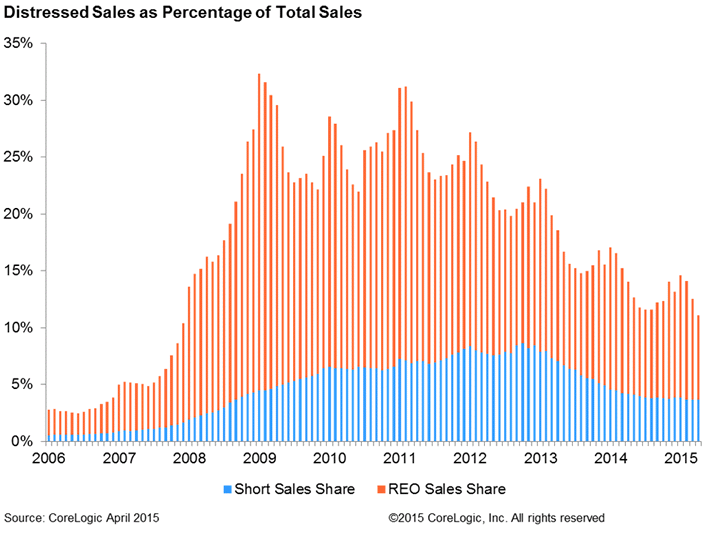While the share of home sales accounted for by distressed properties continues to drift lower, only two states are approaching what could be considered normal levels. CoreLogic said on Thursday that sales of lender-owned real estate (REO) and short sales made up 11.1 percent of residential real estate transactions in April, down 3 percentage points from April 2014 and 1.5 points from March 2015. The company noted that April is typically a month in which the distressed sales share decreases from the previous month, but this was the lowest share for any April since 2007.

REO sales made up 7.4 percent of sales and short sales 3.7 percent. Short sales have had a relatively stable market share since dropping below 4 percent in mid-2014. There are always some distressed sales but they have typically accounted for only about 2 percent of the market so are still running at elevated levels even though far below the 32.4 percent, (27.9 percent REO sales) they represented at the peak of the housing crisis in January 2009.
Only North Dakota and the District of Columbia are approaching normal levels of distressed sales. At the current rate of decline CoreLogic it will be mid-2017 before the national as a whole returns to a 2 percent share.
Several states are still seeing very high distressed sales numbers. Michigan is highest at 21.7 percent, only a fraction ahead of Florida, also at 21.7 percent. Maryland, Illinois, and Connecticut all had April distressed sales representing slightly more than 19 percent of the total. The greatest improvement has been in California which has dropped by 57.8 percentage points from its January 2009 peak of 67.5 percent.
The Orlando area led the 25 largest Core Based Statistical Areas (by number of outstanding loans) with a 24.7 percent share of distressed sales. It was followed by two other Florida areas, Miami at 23.8 percent and Tampa-St. Petersburg-Clearwater at 19.8 percent. The Riverside-San Bernardino area has dropped from a 76.3 percent distressed sales share in February 2009 to 12.7 percent in April, demonstrating the most improvement in the country.







